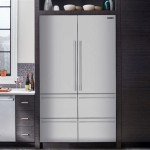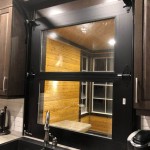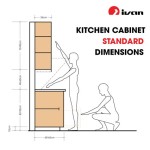Delta Soap Dispenser For Kitchen Sink: A Comprehensive Guide
The kitchen sink, a high-traffic area in any home, necessitates functional and aesthetically pleasing accessories. Among these, the soap dispenser plays a crucial role in maintaining hygiene and streamlining daily tasks. Delta, a reputable brand in kitchen and bathroom fixtures, offers a range of soap dispensers designed specifically for kitchen sinks. This article provides a detailed overview of Delta soap dispensers, covering their features, benefits, installation, and maintenance, assisting homeowners in making informed purchasing decisions.
Delta soap dispensers are designed to be a seamless and integral part of the kitchen sink setup. Unlike standalone soap bottles that clutter the countertop, these dispensers are integrated directly into the sink or countertop, providing a cleaner and more organized aesthetic. This built-in design minimizes visual clutter and contributes to a more streamlined kitchen environment.
The primary function of a Delta soap dispenser is to provide easy access to soap for handwashing and dishwashing. The pump mechanism allows for controlled dispensing, minimizing waste and ensuring consistent amounts of soap are released with each press. This controlled dispensing is particularly beneficial in preventing overuse, thereby extending the lifespan of the soap.
Delta offers a variety of soap dispenser models to suit different kitchen styles and preferences. These models vary in design, finish, and soap reservoir capacity. Consumers can choose from classic, modern, and transitional styles to complement their existing kitchen décor. Available finishes typically include chrome, stainless steel, bronze, and matte black, allowing for seamless integration with other kitchen fixtures.
Key Benefits of Using a Delta Soap Dispenser
Delta soap dispensers offer several advantages over traditional soap bottles, making them a worthwhile addition to any kitchen. These benefits range from improved hygiene to enhanced aesthetics and long-term cost savings.
Firstly, integrated soap dispensers promote better hygiene. By eliminating the need to handle a shared soap bottle, the risk of cross-contamination is significantly reduced. The pump mechanism is designed to be easily cleaned, further minimizing the potential for germ buildup. This is particularly important in a kitchen environment where food preparation takes place.
Secondly, as mentioned previously, Delta soap dispensers contribute to a cleaner and more organized kitchen countertop. The built-in design frees up valuable countertop space, eliminating clutter and creating a more visually appealing environment. This is especially beneficial in smaller kitchens where maximizing space is crucial.
Thirdly, Delta soap dispensers are designed for durability and longevity. Constructed from high-quality materials, these dispensers are built to withstand daily use and resist corrosion. This durability translates to long-term cost savings, as homeowners are less likely to need to replace the dispenser frequently, unlike cheaper, less robust alternatives.
Finally, using a refillable Delta soap dispenser is more environmentally friendly than continuously purchasing disposable soap bottles. By refilling the dispenser with bulk soap, consumers can reduce their plastic waste and contribute to a more sustainable lifestyle. This environmentally conscious approach aligns with the growing trend of eco-friendly kitchen designs.
Installation Process of a Delta Soap Dispenser
The installation of a Delta soap dispenser is generally a straightforward process that can be accomplished by homeowners with basic plumbing skills. However, it is essential to follow the manufacturer's instructions carefully to ensure proper installation and avoid potential leaks.
Before beginning the installation, it is crucial to gather the necessary tools and materials. These typically include an adjustable wrench, a screwdriver, plumber's putty or silicone sealant, and the Delta soap dispenser kit itself. It is also advisable to have a bucket and towels on hand to catch any water spills during the process.
The first step involves identifying the desired location for the soap dispenser on the sink or countertop. Most Delta soap dispensers require a standard 1 3/8-inch diameter hole. If the sink or countertop already has a pre-drilled hole, ensure that it is compatible with the dispenser's mounting specifications. If a new hole needs to be drilled, use a hole saw of the appropriate size and follow the manufacturer's guidelines for safe drilling practices.
Once the hole is prepared, insert the soap dispenser's spout through the hole from above. Depending on the model, there may be a rubber gasket or O-ring that needs to be placed between the spout and the sink or countertop to create a watertight seal. Apply plumber's putty or silicone sealant around the base of the spout for added protection against leaks.
From below the sink, attach the mounting hardware, which typically consists of a washer, nut, and possibly a locking ring. Tighten the nut securely using an adjustable wrench, ensuring that the spout is firmly attached to the sink or countertop. Avoid overtightening, as this could damage the sink or dispenser.
Next, connect the soap reservoir to the dispenser spout. The reservoir is usually a plastic bottle that screws or clips onto the spout. Ensure that the connection is secure and that there are no gaps that could cause leaks. Fill the reservoir with soap, being careful not to overfill it.
Finally, prime the pump by pressing down on the dispenser head several times until soap begins to flow. Check for any leaks around the base of the spout and the reservoir connection. If any leaks are detected, tighten the connections further or apply additional sealant as needed.
While the installation process is generally straightforward, homeowners who are uncomfortable with plumbing tasks may consider hiring a professional plumber to ensure proper installation and avoid potential issues.
Maintaining Your Delta Soap Dispenser
Proper maintenance is essential to ensure the longevity and optimal performance of a Delta soap dispenser. Regular cleaning and occasional troubleshooting can prevent common problems and keep the dispenser functioning smoothly.
Periodic cleaning is crucial to prevent soap buildup and clogs within the dispenser. At least once a month, empty the soap reservoir and rinse it thoroughly with warm water. Use a mild dish soap to remove any residue. Rinse again until all traces of soap are gone.
The spout and pump mechanism should also be cleaned regularly. Use a damp cloth to wipe down the exterior surfaces of the spout. To clean the interior of the pump, fill the reservoir with warm water and pump it through the dispenser several times. This will help to flush out any accumulated soap residue.
If the soap dispenser becomes clogged, try flushing it with hot water. If this does not resolve the issue, use a thin wire or pipe cleaner to gently dislodge any obstructions in the spout or pump mechanism. Avoid using sharp objects that could damage the dispenser.
If the pump is not dispensing soap properly, it may need to be primed. Fill the reservoir with soap and press down on the dispenser head several times until soap begins to flow. If the pump is still not working, check the connections to ensure that they are secure and that there are no leaks.
In areas with hard water, mineral deposits can accumulate inside the soap dispenser, leading to clogs and reduced performance. To prevent this, occasionally fill the reservoir with a solution of equal parts water and white vinegar. Allow the solution to sit in the dispenser for several hours, then flush it out with warm water. This will help to dissolve mineral deposits and keep the dispenser functioning smoothly.
For dispensers with chrome or stainless steel finishes, use a non-abrasive cleaner to avoid scratching the surface. A microfiber cloth is ideal for wiping down these finishes without leaving streaks. Avoid using harsh chemicals or scouring pads, as these can damage the finish.
By following these maintenance tips, homeowners can ensure that their Delta soap dispenser remains in good working condition for years to come. Regular cleaning and timely troubleshooting can prevent costly repairs and extend the lifespan of the dispenser.
In summary, Delta soap dispensers offer a convenient, hygienic, and aesthetically pleasing solution for dispensing soap in the kitchen sink. Their durable construction, variety of styles and finishes, and ease of installation make them a popular choice among homeowners. By understanding the benefits, installation process, and maintenance requirements of these dispensers, consumers can make informed decisions and ensure that their Delta soap dispenser provides years of reliable service.

Delta Pilar Sink Mounted Metal Soap Dispenser In Stainless Rp50781ss The Home

Delta Pilar Sink Mounted Metal Soap Dispenser In Stainless Rp50781ss The Home

Delta Pilar Sink Mounted Metal Soap Dispenser In Chrome Rp50781

Delta Trinsic Metal Soap Dispenser Black Stainless

Delta Monrovia Lumicoat Arctic Stainless 13 Oz Capacity Countertop Soap And Lotion Dispenser Rp101850arpr At Lowes Com

Soap Lotion Dispenser

Delta Soap Dispenser Brushed Stainless Dci 9301

Delta Arctic Stainless 13 Oz Capacity Deck Mount Soap And Lotion Dispenser Rp1001ar At Lowes Com

Delta Esque Metal Soap Dispenser Matte Black

Delta Rp91950ar Arctic Stainless Pivotal Soap Lotion Dispenser








